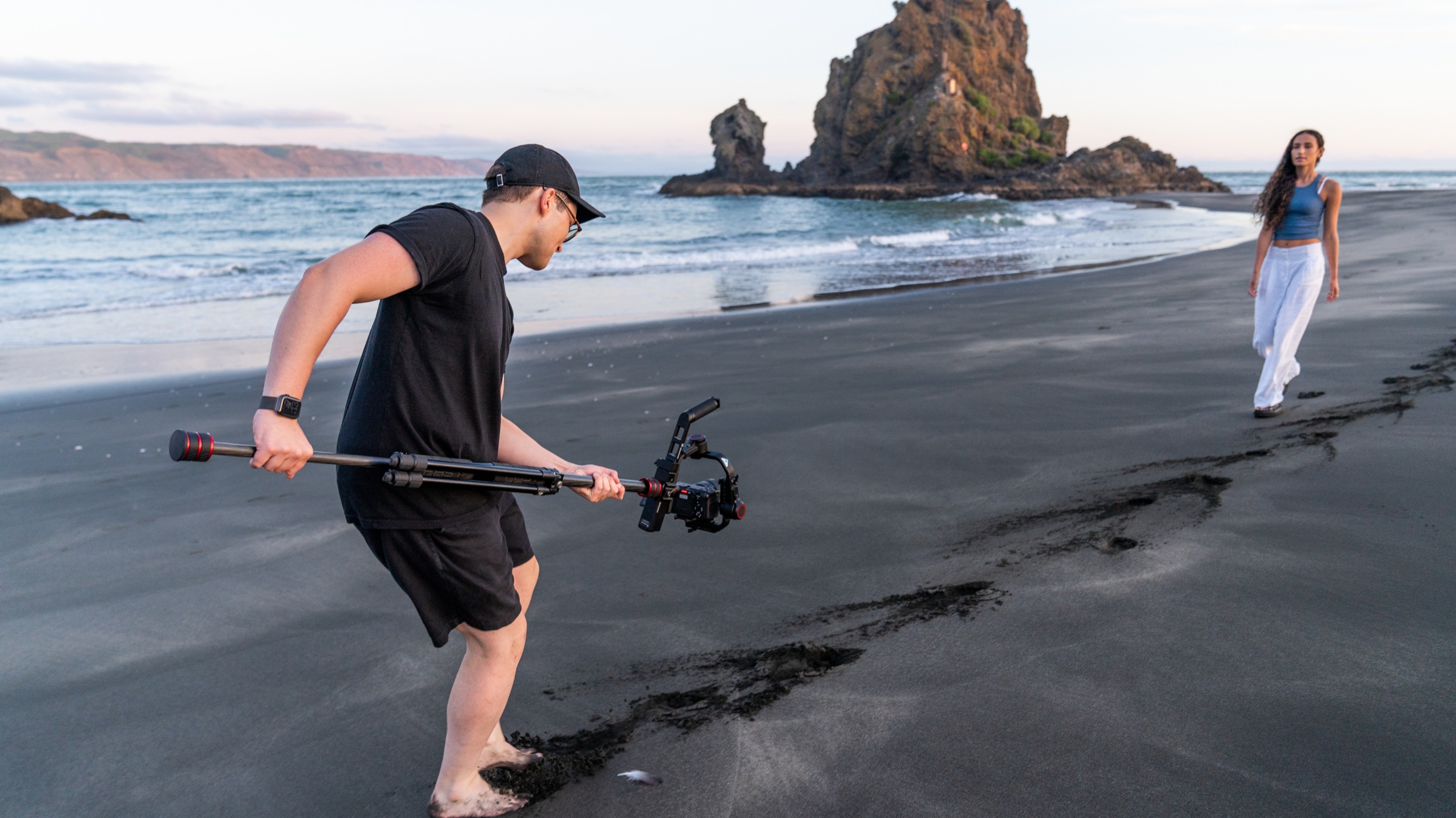How to use a Gimbal to Record Smooth Video
We are living in a golden age of videography, where videographers can film smooth, 4K footage in places that were previously inaccessible, using equipment available to the average consumer, and achieving results that were once the sole domain of feature films.
So what changed?
Basically, everything. But today we are going to focus on a key innovation that has been around since antiquity, but truly came of age in the modern era: the gimbal.
This article is going to cover what a gimbal is, how to use a gimbal properly and how to make professional videos, plus a look at the line of Manfrotto gimbals and how they can help elevate your videography to the next level.


So what is a gimbal exactly?
In their most simple form, a gimbal is a device that allows a mounted object (in our case, a camera) to tilt freely in any direction and still remain horizontal and stable.
Modern gimbals use complex electronics, sensors and motors to cancel out any external motion and ensure the camera has a stable platform to record from. The sensors detect vibrations and bumps and use electronic brushless motors to counteract jarring and movement.
For videography, this translates to smooth, fluid footage of moving objects without the camera shaking, even if the camera operator is moving along with the object - a key element in how to make professional videos that look amazing.


Tips and tricks for how to use a gimbal
Balancing your camera on the gimbal is essential for the gimbal to work properly. If the camera isn’t balanced correctly the motors have to work harder to ensure the camera is staying level and this can create vibrations and shaking.
Every time you attach your camera or change the weight distribution (such as lens changes or adding a filter), you will need to rebalance your camera on the gimbal. First lock all the axes of the gimbal, then unlock one axis at a time and balance the camera for each axis.
Here are some other quick tips for how to use a gimbal to achieve the best results:
● Keep the gimbal close to your body. This will put less strain on your back and give you more freedom and control over camera movement.
● Move slower when filming. Fast kinetic movement makes it harder to keep the subject in frame and track their movements.
● Use your upper body to turn the gimbal, not your arm or wrist. Using your body to control motion will result in smoother, more natural feeling movements.
● Walk backwards and keep your knees bent. This is an old trick and still holds up today. Walking backwards will allow you to step lighter, control the speed of your subject and always keep them in frame.
● Start with the gimbal sensitivity settings on low. High responsiveness will usually create jittery footage as the gimbal tries to react to your movements.
Lastly, make sure that the gimbal you buy has the correct weight payload for your camera and accessories, and any equipment that you plan on buying in the future. Using a gimbal that does not meet the weight payload of your camera will result in shaky footage as the motors become overworked and struggle to maintain balance.
In the Manfrotto line of gimbals, the is our entry level gimbal and has a weight payload of 2.2 kgs. For heavier equipment, the has a more robust form factor and has a weight payload of 4.6 kgs. Both the 220 and 460 offer a traditional stick style form factor and are compatible with mirrorless and DSLR cameras.


How to make professional videos - bringing it all together
Using a gimbal is the first step to achieving smooth footage, but how do you raise the bar to make truly professional looking videos? This is where knowledge, experience and technology come together.
Let’s start with knowledge and experience. Videography is a never ending journey. There is always a new technique to learn, a different approach to try, and every videographer has their own unique style. Outside of courses and online tutorials, you can learn a lot by watching videographers who are more experienced than you, then start experimenting on your own.
While knowledge and experience will set you on the right path, technology will give you the tools to make your vision a reality. The equipment you choose can have a significant impact on the kind of footage you can capture.
Modular gimbals such as the can give you more control over the types of footage you can capture. One of the main features is a removable handle that can be used as a remote control, with an integrated gyro so the handle movements can be mimicked, and allow the gimbal to be used with different types of supports.


When learning how to use a gimbal to shoot different compositions, a boom will allow you to shoot from ground level to an overhead drone perspective, giving you more flexibility and freedom. The new is a compact and lightweight carbon-fibre boom with a payload of up to 6.5 kg at the maximum Gimboom extension, and standard 3/8” and 1/4” top attachment screws.
To make shooting easier and more accurate, try using for Manfrotto Gimbals 220 & 460. Follow Focus is compatible with the most popular lenses and will allow you to precisely control focus using the multi-function knob, with real-time tracking in a few simple steps.


Start your journey to smooth professional video
To find out more, view the complete range of Manfrotto gimbals on our Collections page, or head over to the Manfrotto Imagine More YouTube channel to watch tutorials, see professionals at work and keep up to date with the latest technology.



























